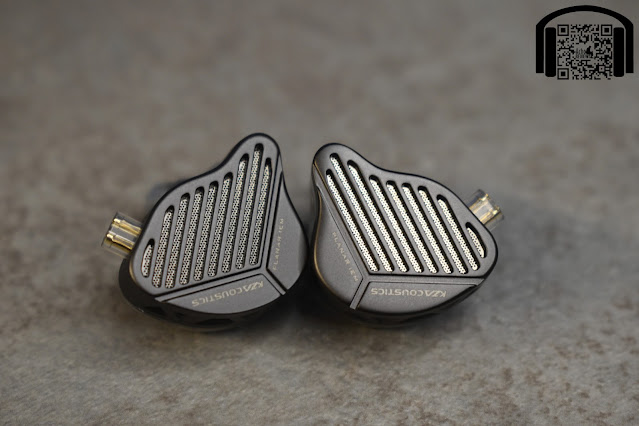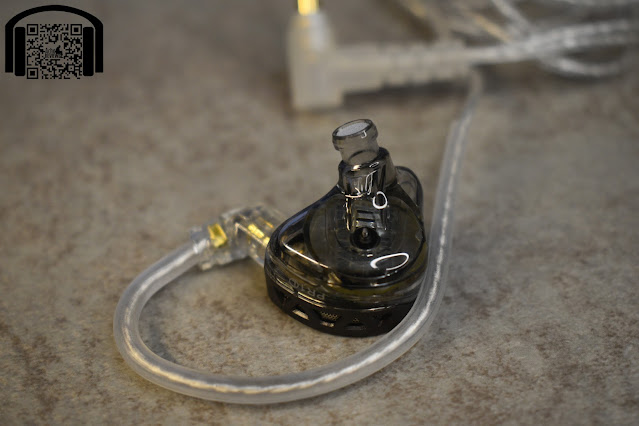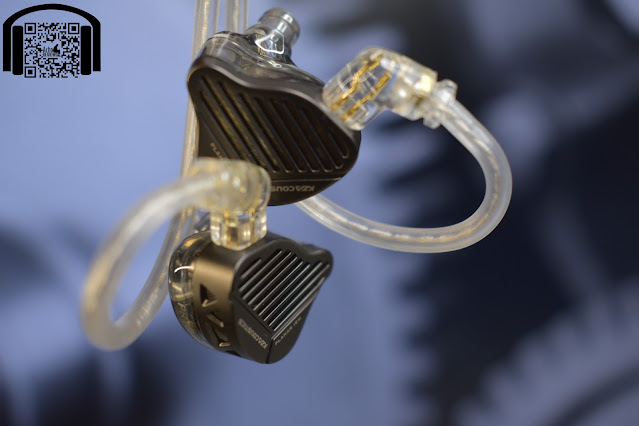- Get link
- X
- Other Apps
English | Español
Also available on YouTube in Spanish: Acho Reviews YouTube
The KZ PR1 have been sent to me by Linsoul for me to try and share my opinions. As always with Linsoul, they have not made any specific requests and my review will aim to be as unbiased and sincere as possible, although you should always consider the fact that these IEMs have been sent free of charge.
You can find the KZ PR1 on Linsoul here: https://www.linsoul.com/products/kz-pr1
As always, this is a non-affiliate link.
Intro…
Until recently there were very few planar IEMs on the market, we had Audeze, Tin and not much more. Now there are no shortage of planar IEMs available, covering all kinds of price brackets. The PR1 is Kz’s entry into the planar battle, coming in at just over 65€ and using a newly developed 13.2mm driver that is different to the drivers used in many other sets.
So the question is, other than the price, does the PR1 provide anything that sets it apart from all the other planar models that are readily available?
Presentation…
The PR1 presentation is just another typical KZ package. A small white box covered with a transparent cover that reveals the IEMs inside.
The contents include the IEMs, the typical KZ cable, the typical KZ tips and the typical KZ user guide.
So, as far as presentation goes, there is nothing here that hasn’t been seen many many times before from the brand.
I have always said that the presentation is the last thing on my list of worries and that I would much prefer the money to be spent on the IEMs themselves than a bunch of accessories that I may or may not (probably the latter) use.
Saying that, many other brands have got us used to decent packaging and contents, making the KZ presentations lack in comparison, giving us a cheap vibe when opening the package. Again, this is not an issue, as long as the IEMs provide an experience that matches the price point.
Build and aestetics…
I have to say that I like the industrial looks of the PR1. They use a combination of a clear resin interior shell with a gunmetal grey aluminum faceplate. There are grills on the front of the faceplate, with more ventilation areas along the top. Now, these IEMs are well vented but by no means are they as open as the faceplates would lead to believe. However, it does add a great aesthetic to them, in my opinion of course.
The comfort is the same as the majority of KZ models, which I find to be quite comfortable with no issues over longer periods of having them in my ears.
As far as the cable, well, not much I can say that hasn’t been said many times before. It’s not a fancy cable but it does its job and is much better than the cables that KZ used to include in yesteryears.
Sound…
As I have quite a few IEMs that are pending review, I have been measuring them in batches, meaning that for some models I have seen the measurements before listening to them. THe PR1 are one of these cases.
I am mentioning this because when I saw the graph, my first thoughts were “oh no!”. However, when I got around to listening to them (quite some time after graphing them), I was expecting something much worse than what I actually found (not to say that what I found was amazing).
Here is the graph in comparison to my personal preference target:
Those of you who follow my reviews and know my tastes will be able to spot exactly what I am referring to by looking at the graph. That 10dB over my preference is the subbass zone is one thing but the 6 to 8dB over my preferences in the midbass range was what worried me more.
So I was expecting overly present and bloated bass, stealing the spotlight from the rest of the frequencies, yet it is not quite as bad as I expected.
I have said before that I have no issues with excessive subbass (which is certainly the case here) as long as it is clean and doesn’t lose definition, and the KZ are actually not too bad in this realm.
Moving through the usual frequency categories and starting off with the subbass, yes there is a lot. In fact, listening to heavy subbass tracks, such as my usual subbass test track “Chameleon”, there is a heck of a lot of rumble. It is in fact too much rumble for my tastes. However, in tracks that have less subbass presence, the PR1 doesn’t force it on you and it keeps more or less out of the way of the other frequencies.
If you are someone looking for a planar experience with plenty of subbass rumble, then I think that the PR1 has you covered.
The midbass is a little more invasive but is still not as bad as I expected it to be when looking at the graph. I will say that the midbass is not out of control though, at least with the majority of music. It does bleed over a little into the lower mids, or at least it gives that impression due to the dip in the center of the mids, but is rather composed and is not terrible.
Listening to things like “No Sanctuary Here” from my test list, the focus is certainly on the lower end, pushing the midbass above the level I would like to find on this are but it is tolerable. I do find it tiring but it is not headache inducing like it is on other bass heavy models (to me of course).
The mids do suffer from a scoop between the 500Hz and 1kHz mark, meaning that V shaped recordings will be even more exaggerated, especially towards the lower notes. This is something that many people find enjoyable but it is not something that I favour personally.
The upper end of the mids does climb rather smoothly to the ear, however, the presence between 2.5kHz and 3kHz is not quite enough to balance out that low end. It is not terrible, again, I expected much worse judging by the graph, but it is still lacking some clarity and definition, with vocals taking a back seat on many tracks. Sting's voice in “Walking On The Moon'' seems quite distant (maybe on the moon? 😉 ), as does the guitar, with the bass becoming the lead instrument (which some bassists would be happy about).
Moving into the upper frequencies, the extension is decent, with a sensation of air that is maybe not as apparent due to that low end being overly present. Using the typical “Code Cool” sibilance test, the results aren’t bad although they are not perfect either.
As far as details go, again they aren’t bad but they are not overly impressive for a planar driver either. To be fair, even the S12 that I really enjoy is not exactly a detail monster and none of them come close to what I have come to expect from bigger planar drivers, but the PR1 is certainly acceptable detail wise for it’s price point. Again, the excessive bass works against the sensation of detail, which does improve slightly by EQ’ing the low end down.
Soundstage is not a strong point in my opinion either. I did expect more width from a set of IEMs that looks to be fairly open but I’m afraid it is around average or even slightly lower. Image placement is ok inside the space it has to work with but becomes difficult to appreciate when the track is bassy. For example, “Bubbles” has a constant low rumble that takes away from the clarity and definition, and “Bubbles” is not exactly a bassy track.
Regarding isolation, well to be honest it isn’t terrible. It is actually better than average in the lower ranges whilst falling slightly below average as we get to the higher frequencies. It would probably have been better if it was the opposite (so the bass could be tamed naturally in noisy environments) but I am not complaining.
Conclusion…
If it wasn’t for the excessive bass ranges, then I would have actually been pleasantly surprised by the PR1, coming in as one of the cheapest planar IEMs on the market. In fact, with some EQ, these can be made to sound rather good for the price. However, as it is, I do find that the low end is far too much the “center of attention”.
If you are a bass head and are looking for a budget set of planar IEMs, then I think the PR1 should definitely be something you try out. The performance is also not terrible, it maintains its composure fairly well with fast moving dance tracks and I can see a lot of people being able to have a party in their head with their favourite dance tracks.
However, if you are looking for something that is more of a balanced sound, then I feel that there are quite a few alternatives out there that are much better suited, both in the budget range and in the planar range, if t
hat is what you are aiming for.
I can’t say that the PR1 is bad, in fact, if it had been released a year or so ago, before the planar boom, then it would have probably received a lot of praise. As it stands, there is a lot of competition going on in the planar IEM world and while the PR1 does have something that the others don’t (that 10dB of bass), in my personal tastes it is not high on my list of preferences.
All FR measurements of IEMs can be viewed and compared on achoreviews.squig.link
All isolation measurements of IEMs can be found on achoreviews.squig.link/isolation
To comment or contact, visit any of the following social media platforms:





.png)
.png)

